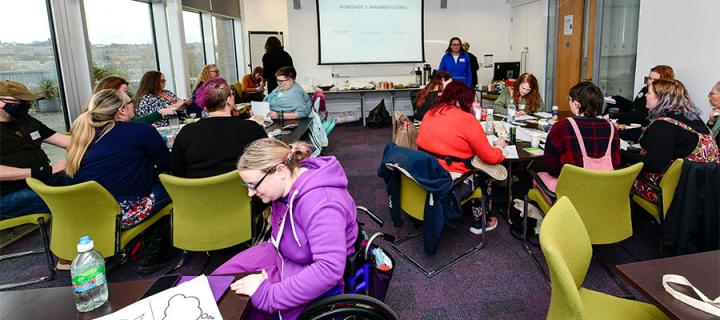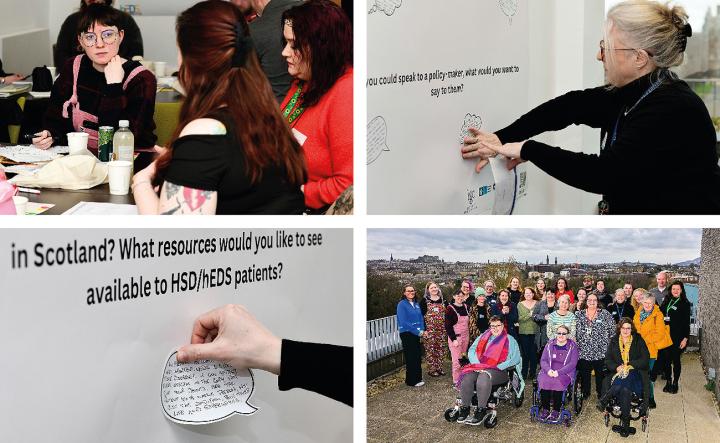People living with Hypermobile Ehlers-Danlos Syndrome share their experiences
Kathryn Berg and Dervil Dockrell hosted the HSD/hEDS: Translating Research into Change event to engage with people living with Hypermobility Spectrum Disorders (HSD) and hypermobile Ehlers-Danlos Syndrome (hEDS) and to share research developments.

The Institute of Genetics and Cancer welcomed twenty representatives from the hEDS/HSD community in February for a vibrant and enthusiastic day of interactive workshops.
Ehlers-Danlos Syndromes are a group of life-long genetic conditions which affect the connective tissue of the whole body, often severely, making it more fragile. hypermobile Ehlers-Danlos Syndrome (hEDS) is one of 13 subtypes of Ehlers-Danlos Syndrome, and is the only subtype with no known genetic cause. Where criteria are not met for hEDS or any other connective tissue disorder, a diagnosis of Hypermobility Spectrum Disorders (HSD) may be given.
People living with these conditions often do not have their condition recognised by healthcare professionals, with some taking decades before finally receiving a diagnosis.
The team’s research in 2023 showed that the average timeframe from symptom presentation to diagnosis is almost 20 years with 12% of Scottish patients having to travel to England for a diagnosis and another 1 in 5 paying to have their condition diagnosed by a private healthcare provider.
Dervil and Kathryn will be taking the experiences that were shared prior to and during the event to the Scottish Parliament in May for a 3-day exhibition at Holyrood, as part of a Cross-Party Group on Arthritis and Musculoskeletal Conditions, where they’ll be ensuring patient voices are heard by presenting a report, video and illustrated event minutes detailing the lived experiences of hEDS/HSD patients in Scotland. A scrapbook made by people living with the condition during the event will also be showcased to provide further insight into the condition. An illustrated introduction to hEDS/HSD was also produced, which can be viewed at the link below.
What is hEDS/HSD? An illustration by Rose Matheson
It’s nice to be involved because our voices are the most important […] we live this every second of every day, so if anyone is qualified to talk on Ehlers-Danlos syndrome, it’s the patients living with it. […] Collaborating and doing this research is a really effective way to get [information] to the places it needs to go to, and the best chance of making change.
Today has made me feel like I actually have a community, and that I have people who are like me, and that it’s not in my head any more. This [event] is a big thing, and it takes a lot out of you, and we’ll pay for it later, but this [event] has probably been one of the happiest things I’ve been involved in.
It was a privilege to share our research with the people at the centre of it, and learn from those who have lived experience of hEDS and HSD. The stories we heard were heart-wrenching and we want to do patients justice moving forward. We have listened and we will do our best to take the ideas and feedback forward, to instigate a change for these people in the Scottish healthcare system.
Related links
- Dervil Dockrell and Kathryn Berg named 2023 Ehlers-Danlos Support UK Community Champions
- Stuart Ralston Research Group




